I’ve said it before: a
successful PPC campaign boils down to two things:
- Increasing click-through rate (CTR)
- Lowering cost-per-click (CPC)
Pretty simple, right?
But I want to add one more point to that statement. It’s not complicated.
You also need to get
high quality traffic.
This means reaching your target audience and bringing in visitors who are ready to buy. What you don’t want is lukewarm traffic with only a vague interest in your product/service.
You want leads who have one hand on their wallets, ready to whip them out and make a purchase.
Now, allow me to point out a brutal truth about PPC marketing.
It’s a slippery slope, especially if you’re new to the game.
If you don’t know what you’re doing, it can chew you up and spit you out.
Many “noobs” quickly find their budgets depleted with only a handful of sales to show for it.
Some even end up spending more on their PPC campaigns than they get in return from sales. It’s not a good situation.
In order to get a favorable ROI, you want to ensure that 1) you’re driving high quality traffic to your landing page and 2) you’re not overspending on CPC.
In fact,
you want rock-bottom CPCs.
To accomplish this requires a bit of an out-of-the-box approach.
You need to zig when other PPC marketers zag.
Let me show you seven ways to get high quality traffic while spending the absolute least amount of money on it.
1. Look beyond Google AdWords
When you hear the word
PPC, what’s the first thing that comes to mind?
I would bet that for at least 90% of you, it would be
Google AdWords.
And why wouldn’t it be?
It’s had a stranglehold on the PPC market for years.
In fact, a fairly recent study from
Smart Insights reports that Google controls 67.78% of the search engine market:
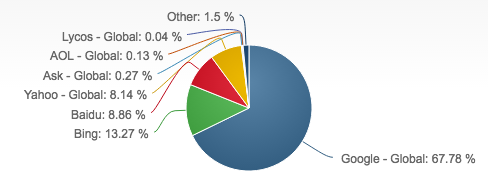
Of course, this is the natural choice for an average PPC marketer.
The logic is that it receives the most traffic, so it’s the perfect PPC platform to target.
But I would have to disagree.
Don’t get me wrong. I don’t have anything against Google AdWords.
In fact, I’ve pulled in a massive amount of high quality traffic from it over the years, and it has netted me thousands in sales.
But you should by no means pigeonhole yourself and think that this is
the only platform there is.
Why?
Because it’s uber-saturated and highly competitive.
This means one thing: a
high CPC.
Here’s a breakdown of some of the
most expensive CPCs according to industry:
I’ve even heard of some keywords costing as much as $100 a click. That’s crazy!
So even if you bring in a lot of high quality traffic, your ROI will be minimized because you’re spending a fortune on each click.
This can quickly eat away at your profits.
The bottom line here is that it’s smart to explore alternatives to Google AdWords.
Here is
a list from PPC Hero that highlights some specific platforms to check out.
Although you may not get the same volume of traffic, the CPCs tend to be much lower on average.
2. Lower your max bids
This is perhaps the simplest way to reduce your CPC.
Lower your max bids, and your CPC will diminish as well.
But there’s a catch.
If you lower your CPC too far, the positioning of your ads can suffer (e.g., they fall down the page, and fewer people click on them).
The trick to pulling this off is to find the sweet spot, where you lower your bids without your CTR taking a hit.
Here’s what I suggest:
- Identify a handful of your top performing keywords
- Lower their bids slightly (you may even want to start with just a cent or two)
- See what your new CTR is
- If those keywords still perform well, lower your bids again
Repeat this process until you find the sweet spot.
Just be sure not to make any monumental changes right off the bat, and keep a close eye on things.
If you notice a drastic drop in performance, increase your max bid to a number that’s closer to the original bid.
3. Do manual bidding
There are two types of bidding on most PPC platforms: automatic and manual.
While automatic bidding is more convenient and can be a good way for beginners to test the waters, it can definitely lower your CPC.
If you’ve primarily been sticking with automatic bidding thus far, I suggest switching to manual (at least for a little while) to see if it has a positive impact on your CPC.
This gives you a greater level of control and you’re not at the mercy of an algorithm that may not always have the best interests of your ROI in mind.
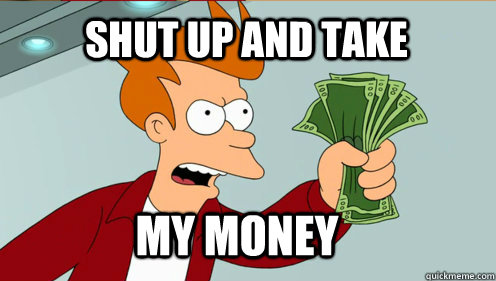
But here’s the deal.
It can be overwhelming if you’re doing manual bidding across several campaigns at once.
Start with just one campaign initially until you get the hang of it. Then you can expand to others.
4. Target long-tail keywords
You’ve probably heard me sing the praises of long-tail keywords in the past for organic SEO.
There’s no doubt that long-tails get results.
In fact, long-tail keywords account for
70% of all keywords.
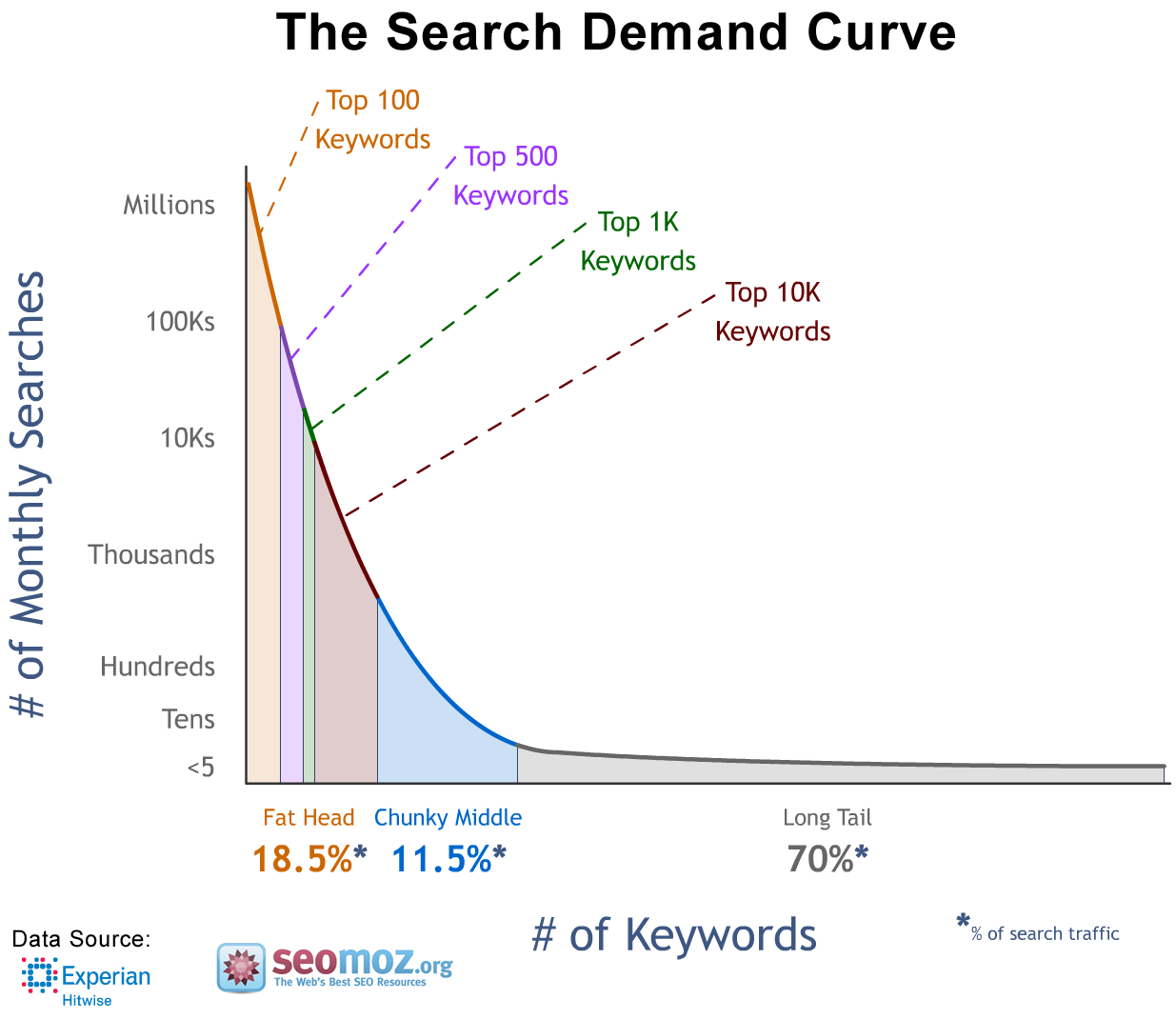
But the truth is that they’re something you should implement in your PPC campaign as well.
Why?
It’s simple. You’ll pay considerably less for a click from a long-tail keyword.
Here’s an example…
Let’s see what the suggested bid for a broad keyword is. I’ll use “running shoes.”

As you can see, it’s $2.66.
Now let’s see what the suggested bid for a long-tail variation is.

It’s only $0.61. So you can save over $2 per click by simply using a long-tail keyword.
Just think of how much you would save for 100 clicks or 1,000.
I recommend looking at your ad groups to see if there are any broad keywords that could be revised and made into long-tail keywords.
It will take some trial and error, but this is a great way to reduce your CPC dramatically.
Of course, you won’t receive the same volume of traffic. But you can maintain higher quality standards with the traffic you do get and save a boatload of money in the process.
5. Add negative keywords
One way some PPC marketers get themselves into trouble is by forgetting to include negative keywords.
What exactly is a negative keyword?
White Shark Media defines it as “a word or phrase that allows you to filter out who your ads will be served to in the search results page.”
In other words, it minimizes the odds of the wrong person clicking on your ad.
Using negative keywords is important because it ensures you’re not wasting your money on irrelevant clicks from unqualified people.
Implementing negative keywords can really help you cut costs in the long run, thus lowering your CPC.
But how do you come up with negative keywords?
One of my favorite tools is
Wordstream’s Free Negative Keyword Tool.
Allow me to show you how it works.
Start by entering your keyword phrase in the search box. We’ll stick with “running shoes” as an example.

You’ll then get a list of potential negative keywords.
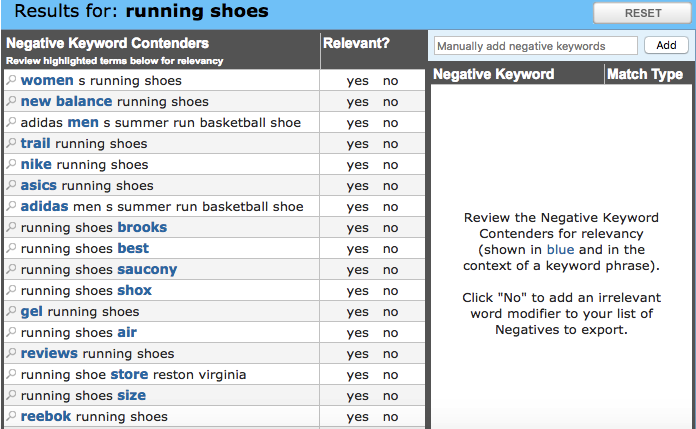
Just choose which ones are irrelevant by clicking “No,” and they’ll be moved to the right hand side.
If I’m selling men’s running shoes, I would want to use “women’s running shoes” as a negative keyword.
Keep clicking on keywords that are irrelevant to fully populate your list of negative keywords.
Then add these to your campaigns and ad groups on your PPC platform.
6. Keep devices in mind
Here’s the deal with devices. Each one has a different CTR.
For instance, smartphones may outperform tablets and desktop computers.
In fact, that’s exactly the case according to a study from
MarketingProfs that analyzed Google AdWords CTR by device:
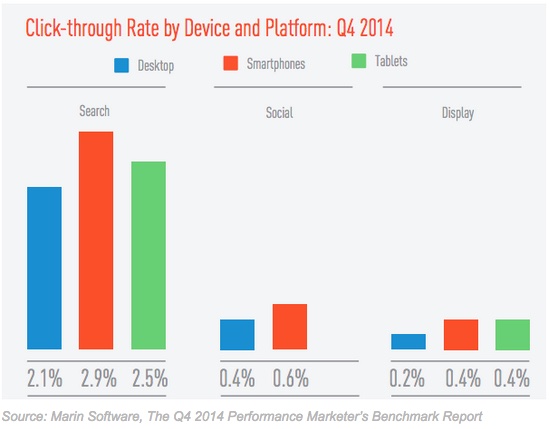
By looking at this data, you can conclude that you would want to put an emphasis on reaching customers who are using smartphones.
However, this is just an example and doesn’t necessarily mean that this is the best course of action for
your campaign.
What I’m saying is that you should keep devices in mind when looking over your reports.
If it’s clear that a certain device is outperforming the others, make it a focal point of your campaign.
You’ll also want to scale back or even eliminate other devices that aren’t carrying their weight.
7. Check geographic locations
Finally, there’s the issue of location.
You want to make sure you’re only reaching people in locations your business can actually serve.
Otherwise, you’re basically throwing money away.
Let’s say you’re a brick-and-mortar business located in Dallas.
The only customers you need and want to reach are those located within the greater Dallas area.
In this case, you wouldn’t want to spend money on a click from someone from Charlotte or Miami. It just wouldn’t make sense.
Your best bet is to select a radius so you know for sure you’re only paying for clicks from a relevant audience.
Conclusion
There’s a lot that goes into a well-run PPC campaign.
This makes it one of the more challenging marketing strategies, and there’s plenty of room for error.
But at its core, your end goal is to get high quality paid traffic while keeping your CPC to a minimum.
This is the key to maximizing your ROI and getting the most bang for your buck.
Although there are a lot of different ways to go about this, the following techniques I mentioned are some of the more practical ones.
Figuring out the ideal formula for you requires perpetual testing and plenty of trial and error.
But once you’ve got it pegged, you can rinse and repeat until you’re running a rock-solid PPC campaign.
What’s the most you’re willing to pay for a click?
 Save
Save
 Of course, this is the natural choice for an average PPC marketer.
The logic is that it receives the most traffic, so it’s the perfect PPC platform to target.
But I would have to disagree.
Don’t get me wrong. I don’t have anything against Google AdWords.
In fact, I’ve pulled in a massive amount of high quality traffic from it over the years, and it has netted me thousands in sales.
But you should by no means pigeonhole yourself and think that this is the only platform there is.
Why?
Because it’s uber-saturated and highly competitive.
This means one thing: a high CPC.
Here’s a breakdown of some of the most expensive CPCs according to industry:
I’ve even heard of some keywords costing as much as $100 a click. That’s crazy!
So even if you bring in a lot of high quality traffic, your ROI will be minimized because you’re spending a fortune on each click.
This can quickly eat away at your profits.
The bottom line here is that it’s smart to explore alternatives to Google AdWords.
Here is a list from PPC Hero that highlights some specific platforms to check out.
Although you may not get the same volume of traffic, the CPCs tend to be much lower on average.
Of course, this is the natural choice for an average PPC marketer.
The logic is that it receives the most traffic, so it’s the perfect PPC platform to target.
But I would have to disagree.
Don’t get me wrong. I don’t have anything against Google AdWords.
In fact, I’ve pulled in a massive amount of high quality traffic from it over the years, and it has netted me thousands in sales.
But you should by no means pigeonhole yourself and think that this is the only platform there is.
Why?
Because it’s uber-saturated and highly competitive.
This means one thing: a high CPC.
Here’s a breakdown of some of the most expensive CPCs according to industry:
I’ve even heard of some keywords costing as much as $100 a click. That’s crazy!
So even if you bring in a lot of high quality traffic, your ROI will be minimized because you’re spending a fortune on each click.
This can quickly eat away at your profits.
The bottom line here is that it’s smart to explore alternatives to Google AdWords.
Here is a list from PPC Hero that highlights some specific platforms to check out.
Although you may not get the same volume of traffic, the CPCs tend to be much lower on average.
 But here’s the deal.
It can be overwhelming if you’re doing manual bidding across several campaigns at once.
Start with just one campaign initially until you get the hang of it. Then you can expand to others.
But here’s the deal.
It can be overwhelming if you’re doing manual bidding across several campaigns at once.
Start with just one campaign initially until you get the hang of it. Then you can expand to others.
 But the truth is that they’re something you should implement in your PPC campaign as well.
Why?
It’s simple. You’ll pay considerably less for a click from a long-tail keyword.
Here’s an example…
Let’s see what the suggested bid for a broad keyword is. I’ll use “running shoes.”
But the truth is that they’re something you should implement in your PPC campaign as well.
Why?
It’s simple. You’ll pay considerably less for a click from a long-tail keyword.
Here’s an example…
Let’s see what the suggested bid for a broad keyword is. I’ll use “running shoes.”
 As you can see, it’s $2.66.
Now let’s see what the suggested bid for a long-tail variation is.
As you can see, it’s $2.66.
Now let’s see what the suggested bid for a long-tail variation is.
 It’s only $0.61. So you can save over $2 per click by simply using a long-tail keyword.
Just think of how much you would save for 100 clicks or 1,000.
I recommend looking at your ad groups to see if there are any broad keywords that could be revised and made into long-tail keywords.
It will take some trial and error, but this is a great way to reduce your CPC dramatically.
Of course, you won’t receive the same volume of traffic. But you can maintain higher quality standards with the traffic you do get and save a boatload of money in the process.
It’s only $0.61. So you can save over $2 per click by simply using a long-tail keyword.
Just think of how much you would save for 100 clicks or 1,000.
I recommend looking at your ad groups to see if there are any broad keywords that could be revised and made into long-tail keywords.
It will take some trial and error, but this is a great way to reduce your CPC dramatically.
Of course, you won’t receive the same volume of traffic. But you can maintain higher quality standards with the traffic you do get and save a boatload of money in the process.
 You’ll then get a list of potential negative keywords.
You’ll then get a list of potential negative keywords.
 Just choose which ones are irrelevant by clicking “No,” and they’ll be moved to the right hand side.
If I’m selling men’s running shoes, I would want to use “women’s running shoes” as a negative keyword.
Keep clicking on keywords that are irrelevant to fully populate your list of negative keywords.
Then add these to your campaigns and ad groups on your PPC platform.
Just choose which ones are irrelevant by clicking “No,” and they’ll be moved to the right hand side.
If I’m selling men’s running shoes, I would want to use “women’s running shoes” as a negative keyword.
Keep clicking on keywords that are irrelevant to fully populate your list of negative keywords.
Then add these to your campaigns and ad groups on your PPC platform.
 By looking at this data, you can conclude that you would want to put an emphasis on reaching customers who are using smartphones.
However, this is just an example and doesn’t necessarily mean that this is the best course of action for your campaign.
What I’m saying is that you should keep devices in mind when looking over your reports.
If it’s clear that a certain device is outperforming the others, make it a focal point of your campaign.
You’ll also want to scale back or even eliminate other devices that aren’t carrying their weight.
By looking at this data, you can conclude that you would want to put an emphasis on reaching customers who are using smartphones.
However, this is just an example and doesn’t necessarily mean that this is the best course of action for your campaign.
What I’m saying is that you should keep devices in mind when looking over your reports.
If it’s clear that a certain device is outperforming the others, make it a focal point of your campaign.
You’ll also want to scale back or even eliminate other devices that aren’t carrying their weight.
